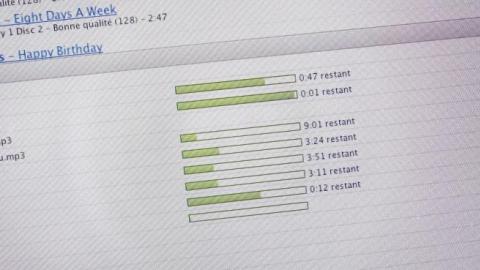A few months ago I reported on a study by the Digital Citizens Alliance and NetNames that documented the widespread availability of pirated material in cyberlockers. Even more troubling, many of these pirate sites had substantial legitimate advertiser support. According to the study, the largest 596 ad-supported content theft sites reaped nearly a quarter of a billion dollars ($227 million) in advertising revenue in 2013.
Today, the advertising industry announced the formation of the Trustworthy Accountability Group to combat advertising at pirate web sites. TAG is jointly created the Association of National Advertisers (ANA), the American Association of Advertising Agencies (4A’s), the Interactive Advertising Bureau (IAB), and GroupM Interaction.
The need for serious attention to advertising support for pirate sites is underscored by the increasing use of automated online advertising directed to popular sites, regardless of their legitimacy. Recent studies by Magna Global describe both the dramatic global increase in display advertisements and the substantial increased use of programmatic buying of digital media inventory including real-time bidding platforms. A "2014 study by the Digital Citizens Alliance(GOOD MONEY GONE BAD | Digital Thieves and the Hijacking
of the Online Ad Business)":http://media.digitalcitizensactionalliance.org/314A5A5A9ABBBBC5E3BD824C… explained how programmatic buying of digital inventory enabled pirate sites to sell space to legitimate advertisers.
Moreover, the Digital Citizens Alliance also recommended steps that advertisers could take to avoid supporting pirate sites:
"Advertisers and ad agencies, networks and exchanges can start by enhancing their voluntary best practice standards. The technology and services to identify and filter out content theft sites are available and should be adopted in the online advertising community. Just as brands do not advertise on porn or hate sites, they can take steps to assure they are not on content theft sites."
The advertisers heard. Thus TAG was born.
Under TAG, a small number of independent third parties will certify advertising technology companies as Digital Advertising Assurance Providers (DAAPs). To be validated as a DAAP, companies must show they can provide other advertising companies with tools to limit their exposure to undesirable websites, including pirate websites.
The posting of legitimate advertising at illegitimate websites creates a vicious cycle. Consumers recognize major brands, and consumer associate the legitimacy and even the endorsement of a website by the presence of legitimate advertising. Thus legitimate advertising by itself can help attract viewers to stay at a website longer and to return to it.
The more consumers visit, view, and return to a website, the easier it is for a website to attract advertisers, particularly through advertisement purchases that focus exclusively on the attractiveness, but not the legitimacy, of a website to consumers.
Of course, otherwise legitimate websites may unwittingly host pirated material, and a website that caters to pirated material may also host legitimate material. TAG can help advertisers avoid pirate websites.
Many advertisers, in order to protect their brand images, avoid certain venues for advertising. Pirate websites should be among the avoided venues. With new technologies, TAG will help protect advertisers from being placed at pirate websites.



















